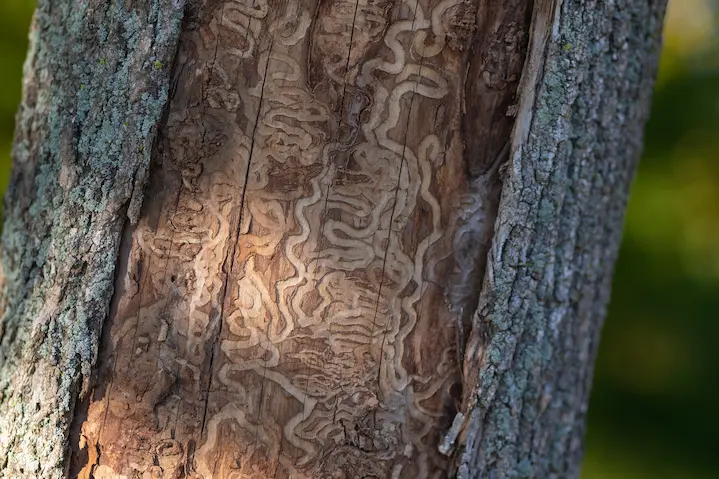
In San Jose, our trees play a vital role in creating picturesque, thriving landscapes. They offer shade, enhance property value, and contribute to the natural beauty we cherish. However, when pests invade, they can quickly undermine the health of your trees, leading to wilting leaves, dying branches, and significant stress for homeowners.
While store-bought pesticides may seem like a convenient solution, they often fail to address the root of the problem. Misuse of these products can sometimes harm the trees further or be ineffective against specific pests. That’s where Anderson’s Tree Care comes in. With our expertise in local ecosystems and sustainable practices, we provide targeted solutions to protect your yard and ensure long-term tree health.
Tree-Damaging Pests to Be Aware Of
Tree pests vary in their impact, from damaging leaves to disrupting the vascular systems essential for a tree’s survival. Identifying these pests early is crucial to mitigating their effects.
Here are some of the most common culprits:
- Emerald Ash Borer
- Asian Longhorned Beetle
- Gypsy Moth
- Pine Beetle
- Elm Bark Beetle
- Hemlock Woolly Adelgid
- Oak Wilt Beetle
- Tent Caterpillar
- Japanese Beetle
- Bagworm
- Cypress Bark Beetle
- Spruce Budworm
- Pine Tip Moth
- Twig Girdler
Need a Tree and Plant Healthcare Estimate?
Click below to leave your information and we will call you right back!
Ready to schedule your tree & plant care service?
Leave your information below and we will give you a call back.
*During normal business hours. After hours calls will be returned the next business day.
Recognizing Signs of Pest Infestations
Spotting the symptoms of pest activity is vital to addressing infestations early. Keep an eye out for:
- Leaves with holes, discoloration, or that are prematurely falling.
- Bark showing small holes, sawdust-like residue, or leaking sap.
- Canopies that appear thin, dead branches, or general tree decline.
It’s important to note that these signs can also indicate other issues, such as disease or environmental stress. A professional assessment can pinpoint the exact cause.
Handling Tree Pest Infestations
Discovering pests in your trees can be overwhelming, but there are effective ways to address the issue. While pruning affected branches or applying insecticides might seem like a good starting point, DIY methods often overlook the bigger picture. Treating tree pests requires a comprehensive understanding of both the infestation and the tree’s overall health.
At Anderson’s Tree Care, our certified arborists assess the situation thoroughly. We identify the pests involved, gauge the extent of the damage, and create a treatment plan tailored to your specific needs.
Customized Tree Pest Solutions
No two infestations are alike, and different pests require different treatment strategies. Anderson’s Tree Care employs advanced arboricultural techniques to provide solutions tailored to your yard’s unique challenges.
Our approach begins with a detailed inspection to assess the infestation’s severity and the tree’s health. Using environmentally responsible treatments, we address the pests while preserving the surrounding ecosystem. Our services don’t just solve current issues—they build resilience to protect your trees for years to come.
Your trees are an essential part of your property’s beauty and value. Let us help you preserve them with expert care and customized solutions. Reach out today for a service quote and take the first step toward a healthier, pest-free yard.
Back to Tree and Plant HealthcareCommon Tree Pests: Steps to Protect Your Yard in the San Jose Metro Area
Serving San Jose CA
San Jose | Fremont | Newark (CA) | Milpitas | Mountain View | Stanford | Palo Alto | East Palo Alto | Woodside | San Mateo | San Carlos
Redwood City | Los Gatos | Saratoga | Cupertino | Fruitdale | Campbell | Alamitos | Santa Clara | Coyote | Morgan Hill | San Martin | Gilroy
Home » Tree and Plant Healthcare » Common Tree Pests: Steps to Protect Your Yard



